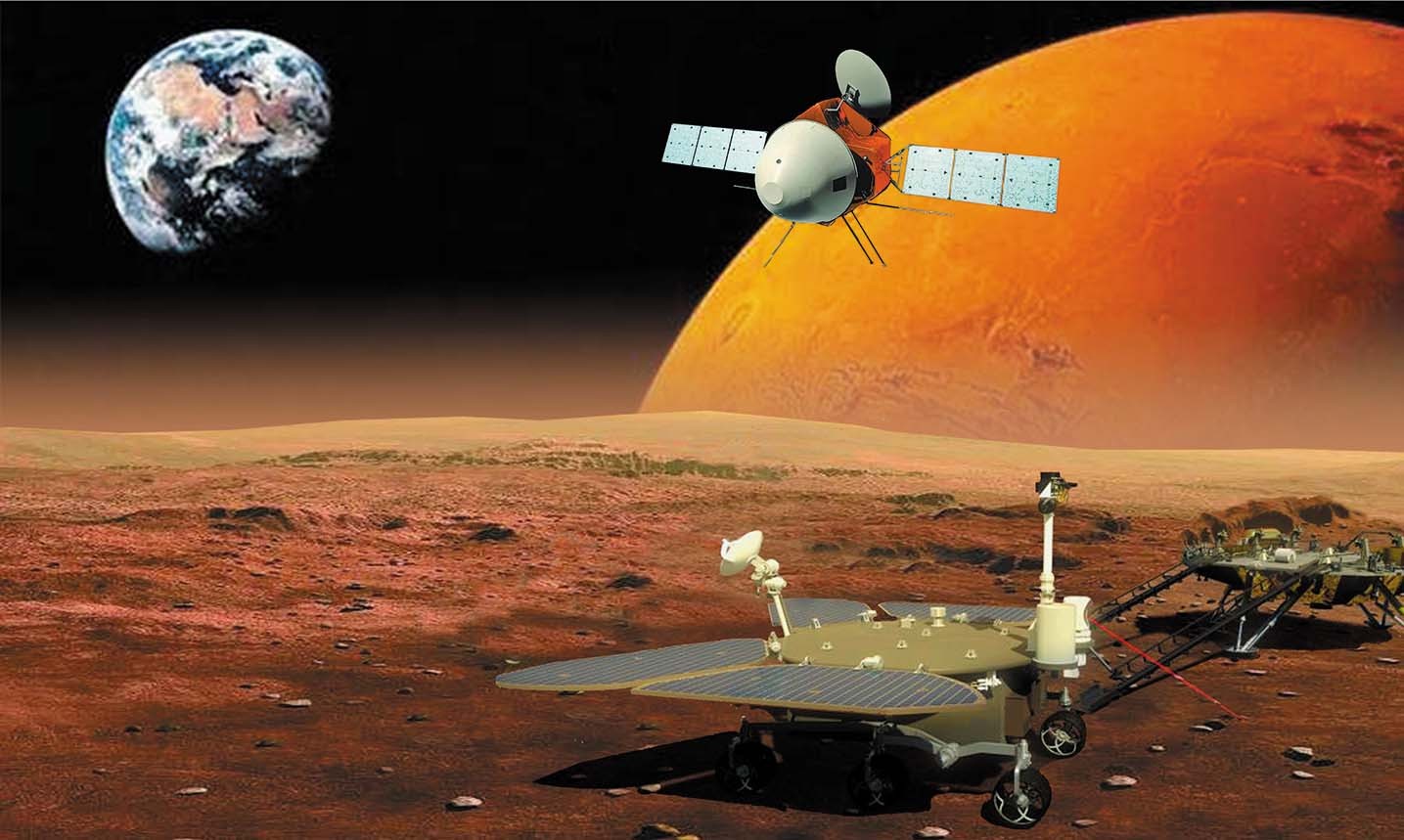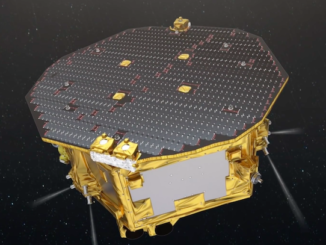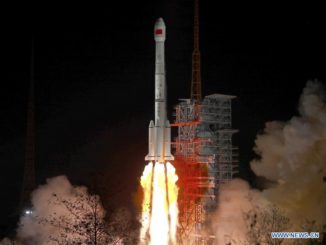
A Chinese rover outfitted with cameras, a weather station, and a sophisticated laser spectrometer could touch down on Mars as soon as Friday, a feat that would make China the second nation to successfully land and operate a spacecraft on the surface of the Red Planet.
China’s Tianwen 1 orbiter will release a module containing the rover a few hours before landing, sending the capsule on a trajectory to dive into the Martian atmosphere for a high-speed entry. The entry capsule, protected by a thermal barrier, will deploy parachutes, fire a retro-propulsion system, and target a touchdown on an expansive flat plain named Utopia Planitia in the northern hemisphere.
If all goes according to plan, a 529-pound (240-kilogram) rover will exit the landing platform down a ramp to begin driving around the unexplored landing site.
The China National Space Administration said Friday the rover could land on Mars between the early morning of Saturday and Wednesday (May 15-19), Beijing time. Amateur radio enthusiasts who regularly track signals from deep space probes said the spacecraft could be on a trajectory to land around 2300 GMT (7 p.m. EDT) Friday, or early Saturday in Beijing.
But Chinese officials did not confirm the exact time of the scheduled landing.
The Tianwen 1 spacecraft, which ferried the rover to Mars, launched from Earth last July on China’s heavy-lift Long March 5 rocket. Tiawen 1 became the first Chinese mission to enter orbit around Mars when it arrived in February, making China the sixth country or space agency to have a probe orbiting the Red Planet, following the United States, the former Soviet Union, the European Space Agency, India, and the United Arab Emirates.
China aims to join an even smaller international club with the Mars landing attempt. Only two nations have achieved a soft landing on the Red Planet.
The Soviet Union’s Mars 3 lander was the first spacecraft to perform a soft landing on the Martian surface in December 1971, but the probe stopped transmitting about two minutes later.
Nine U.S. missions have successfully landed on Mars since 1976.
Tianwen 1 arrived at Mars one day after the UAE’s Hope orbiter steered into orbit around the Red Planet, and eight days before landing of NASA’s Perseverance rover. The favorable planetary alignment of Earth and Mars that allowed the three missions to reach Mars in February comes once every 26 months.
Since arriving at Mars in February, the Tianwen 1 spacecraft maneuvered into an orbit closer to the planet to set up for deployment of the capsule containing the mission’s rover, named Zhurong after the god of fire in ancient Chinese mythology.
The name Tianwen comes from the title of a poem written by the ancient Chinese poet Qu Yuan. Tianwen translates to Questions to Heaven.
The Tianwen 1 orbiter was expected to adjust the low point of its elongated orbit to reach a collision course with Mars in the hours before the rover’s landing. Once ground teams confirm the orbiter is on a good trajectory, the carrier will deploy the entry module and fire thrusters to re-establish a stable orbit around Mars.
Most Mars landers enter the Martian atmosphere on a direct course from Earth. Those trajectories typically have preset landing dates tied to when the missions launched. The design gives Chinese officials flexibility on when to schedule the landing.
The Tianwen 1 orbiter, which will continue its mission after releasing the lander and rover, is designed to operate for at least one Martian year, or about two years on Earth. The solar-powered rover, standing about 5.9 feet (1.8 meters) tall, has a life expectancy of at least 90 days, Chinese officials said.
In addition to mapping and survey duties, the orbiter will relay communications signals between ground controllers in China and the rover exploring the Martian surface.
Assuming the landing is successful, the rover will activate cameras, a subsurface radar to probe underground water ice, sensors to measure the composition of Martian rocks, a magnetic field monitor, and a weather station to begin collecting data at the Utopia Planitia location.
The Zhurong rover has six wheels, and sizes up slightly larger than NASA’s defunct Spirit and Opportunity rovers, which landed on the Red Planet in 2004. The Chinese craft is significantly smaller than NASA’s Curiosity and Perseverance rovers.
Wang Chi, director of the National Space Science Center at the Chinese Academy of Sciences, said in March that China is “open to international cooperation” and said data from the Tianwen 1 mission will be “available publicly soon.”
Scientists from the Institut de Recherche en Astrophysique et Planétologie, or IRAP, in France contributed to a Laser-Induced Breakdown Spectroscopy instrument on the Tianwen 1 rover.
French scientists, with support from the French space agency CNES, provided guidance to their Chinese counterparts on the spectroscopy technique, which uses a laser to zap a pinhead-size portion of a rock, and a spectrometer to analyze the light given off by plasma generated by the laser’s interaction with the rock’s surface.
The advanced technique allows an instrument to determine the chemical make-up of rocks on Mars. French scientists also provided China with a calibration target for the rover’s laser spectroscopy instrument.
The same French team worked on instruments on NASA’s Curiosity and Perseverance Mars rovers. The scientists hope to cross-calibrate measurements between the two U.S.-led missions and China’s Tianwen 1 rover.
Scientists from the Space Research Institute at the Austrian Academy of Sciences assisted in the development of the magnetometer on the Tianwen 1 orbiter and helped calibrate the flight instrument.
Argentina is home to a Chinese-owned deep space tracking antenna used to communicate with Tianwen 1. The European Space Agency also agreed to provide communications time for Tianwen 1 through its own worldwide network of deep space tracking stations.
Cooperation between NASA and China is restricted by a law that bars the U.S. space agency from nearly all bilateral engagement with the Chinese space program.
Email the author.
Follow Stephen Clark on Twitter: @StephenClark1.



